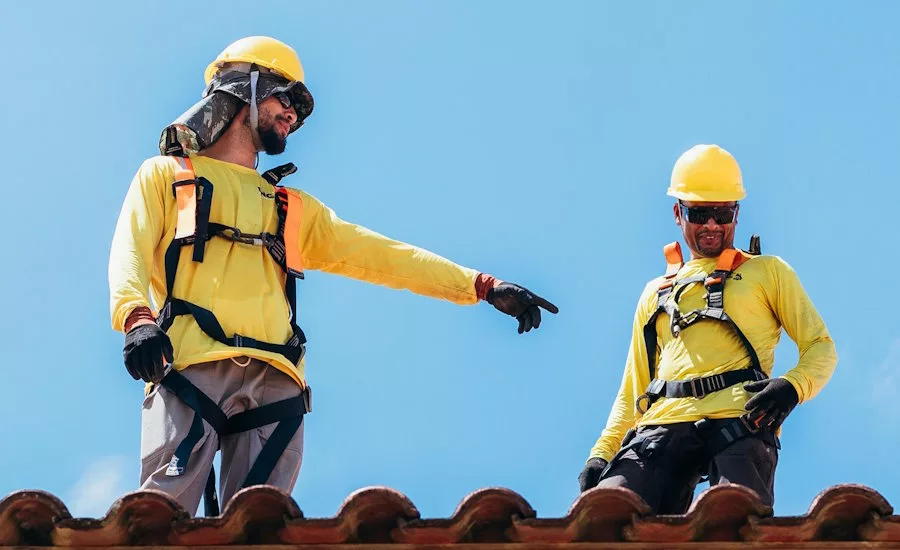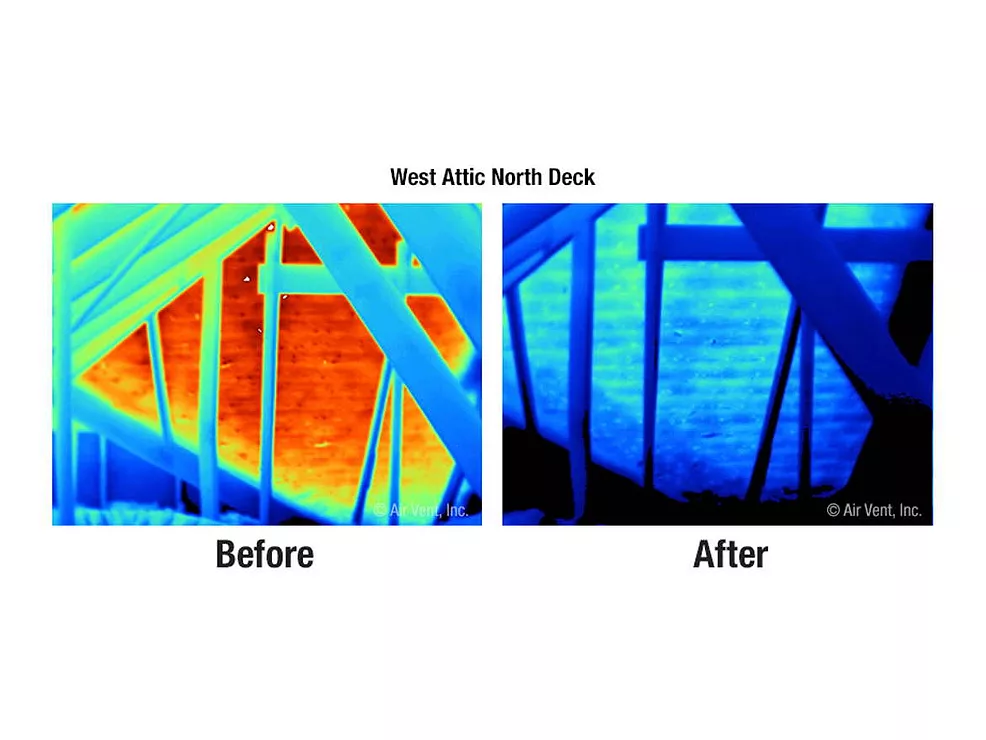OSHA's Focused Inspection
It would be ludicrous to think that all OSHA site inspections are identical, but there is a basic "skeletal process" common to each one that contractors should be familiar with.

It would be ludicrous to think that all OSHA site inspections are identical, but there is a basic "skeletal process" common to each one that contractors should be familiar with. The inspection may originate from a number of sources, including random, computer-generated selection from building permits; industry-specific high rate incident reporting by the Bureau of Labor Statistics; a response to anonymous employee reports of hazardous conditions or practices; fatality or catastrophe; a drive-by alert of a condition or act that is immediately dangerous to life or health; and programmed inspections of various contractors with previous violations to be corrected.
Once the compliance safety and health officer(s) (CSHO) arrive on site, they identify themselves and conduct an opening meeting with the employer or his representative employee in Phase 1 of the inspection process. This formality introduces the CSH officer and explains his/her purpose for inspection. For instance, details of the complaint are explained and the goals of the inspection are described. Most often and upon request, the complainant's identity is kept anonymous. Questions are permitted on behalf of the employer, but only as they pertain to the inspection process itself, such as the statutory rights and obligations of the employer and employee.
Discussion of compliance is postponed until after the inspection tour has been completed. At this point, the employer introduces the employee representative who will accompany the CSH inspector on his tour. It is a right of all employees in this country to elect a representative who will join the inspector, ask any questions, take notes and ultimately report back to the workforce, explaining the on-site violations that were cited. This is perhaps the one OSHA inspection item that is most often neglected in construction. Until I inform them, most employees don't realize it is their legal right to be informed by a co-worker, rather than their employer, of the results of an OSHA inspection. Either the employer or his/her on-site representative will also accompany the CSHO on the tour.

The discussions at this point in the process may be much more extensive. If, for instance, a minor equipment violation was noted on tour and the employer was able to promptly replace the defective equipment with a new, compliant unit, the subject may be reintroduced as "corrected action" to the CSHO. In some cases, this action could result in a de minimus citation, which does not carry a monetary penalty. An explanation of the OSHA case review process and penalty hearing would also be explained to the employer and the employees' representative. Once everyone's questions are addressed and answered, the CSHO issues the specific Department of Labor citations, posts them in the appropriate hazardous locations and leaves the premises.
A comprehensive site inspection significantly increases the odds of uncovering a great many more violations. According to the Omnibus Budget Reconciliation Act of 1990, OSHA has the authority to increase its fines up to seven times - that's up to $70,000 for each willful or repeat violation. And, since 1986, OSHA's Occupational Safety and Health Review Commission (OSHRC) has adjudicated thousands of the most serious cases in appeal under the auspices of a commission settlement judge. So, it's easy to conclude that the more comprehensive the inspection, the higher the penalties. While this may be an oversimplification of many actual site investigations, the basic phases typical to all OSHA inspections remain the same.
OSHA determined that the time and resources spent to pursue, identify and correct these conditions on a few projects "can be better spent pursuing conditions on many projects related to the four hazard areas most likely to cause fatalities or serious injuries." In essence, OSHA decided to spend its most valuable resource - time - more efficiently. The directive is meant to streamline the inspection process in order to intensify investigations "on those projects where there is inadequate contractor commitment to safety and health," concluding, "It is this group of employers that will receive our full attention."
In other words, any contractor's "good-faith effort" toward the safety and health of his employees could be easily identified in his safety program's effort to identify and eliminate these four primary causes of on-the-job fatalities. This would relieve the CSHO from conducting a comprehensive inspection, allowing more time and resources to locate those "uncommitted employers" on whose jobsites these hazards remained unabated. The ability of a compliance officer to implement the focused inspection process is based on a number of qualitative criteria, which must be identified and evaluated before an investigation can commence.
In the opening conference (Phase 1), a number of facts must first be ascertained:

The very first thing to consider is the existence of an accessible copy on site, available during any work shift to each and every one of the employees. If the employer's only copy is back in his office, it can't be considered a functional communication tool for his employees.
How comprehensive are the contents of the program? Is this document merely a photocopy of some other contractor's program with the names changed? Does it relate to the activities, equipment and hazards clearly present on the site? Did the employer utilize a job safety analysis (JSA) in compiling his hazard awareness and mitigation procedures?
To what degree is the employer's written safety and health program actually implemented on this site? Are workers trained and evaluated in the safe work practices called for in the program? Is anyone checking the site regularly for compliance? Is there a penalty phase equitably enforced for those willfully ignoring these practices? Are JSAs regularly conducted on work sites undergoing changes?
Are key personnel assigned safety and health duties actually designated by name in the program? That is, are authorized persons (AP), qualified persons (QP) and competent persons (CP) clearly defined in the duties and personally named, so others may identify them easily?
Is the competent person actively overseeing the work being conducted within the contracted project limit lines (PLLs)? This includes not only his employer's contract scope but also any other exposed, creating, correcting or controlling employer working within his specific PLLs.
How is the written safety and health program actually being enforced on site? Is there a means to regularly inspect and evaluate employee activities on site? Are there ongoing audits or JSAs of these activities designed to identify changing conditions, alternate activities, new equipment or vehicles, and determine the nature of evolving hazards?
Is there a clearly stated "Right to Refuse Unsafe Work" policy in effect? Most importantly, are all employees authorized to promptly tag "Out-of-Service" any defective equipment or hazardous location? Are they trained in the procedure to promptly evacuate the danger zone until the CP gives the order to return?
Employees are initially interviewed by the CSHO in order to determine their level of comprehension of these seven items in a safety and health program. If they are generally evaluated as ignorant of them, then the employer's SHP may be considered unimplemented and therefore not in compliance, and the focused inspection will not be considered an optional form of compliance investigation. Actual examples of compliant safety and health programs can be found in the Federal Register (54FR3904), "Safety and Health Program Management Guidelines," as well as ANSI A10.33, "Safety and Health Program Requirements for Multi-Employer Projects."

If the construction site contains multiple employers, during step two the officer will initially determine if this employer's SHP is sufficiently designed to:

The focused inspection is permitted for construction safety inspections only. If the complaint involves construction health issues, a comprehensive format is required.
Anytime a focused inspection is converted to a comprehensive inspection, all the necessary time and resources shall be devoted to its completion.
A request for a warrant to enter the premises will not affect the determination as to whether a focused inspection will be performed.
The employer and employee rep will be informed of the CSHO's criteria initiating either a focused or comprehensive inspection.
Whenever an unprogrammed inspection is called for (as in the case of a complaint or fatality), a focused inspection shall not be conducted until the initial cause of the complaint or fatality has been thoroughly addressed.
Other-than-serious violations shall not normally be cited or documented.
Contractors that qualify for focused inspections shall be eligible to receive a full "good faith" penalty adjustment of 25 percent.

Even though the OSH Act now defines every worker's safety and health as the employer's prime directive, it wouldn't take more than a short lapse in vigilance for those days to quickly return. As our country's economic policies are rapidly being ingested into the world market, many of our jobs are escaping our borders to be performed elsewhere. While the authority of OSHA and the Mine Safety and Health Administration (MSHA) stops abruptly at our state and territorial limits, many of our workplaces are now scattered around the globe, some of them into some nations with little or no regard for worker safety issues. Our grandchildren's legacy of a safe and healthy workplace is slowly eroding around the edges.
The focused inspection is a reasonable attempt by a federal safety regulatory agency to remain in existence and viable. There are many recognized and coordinated forces at legitimate work within our society dedicated to the reduction of federal control of our lives. In many instances, I agree with them. But with regard to our personal safety and health on the job, I believe there should be no compromise. In truth, if left on our own, sooner or later most of us would compromise. I have witnessed the self-employed construction worker's level of risk assessment on site, and it's nothing to take pride in. OSHA does not regulate self-employed individuals. In general, we are not capable of tending to our own security until it's too late when our sole, personal income is dependent upon our productivity and quality, not our safety and health. Most of us spend 2,000 hours per year on the job. That's 80,000 hours (or 10,000 shifts) per lifetime. Some studies suggest the average American worker spends less than 4 percent of his work shift thinking of and preparing for his or her own safety. On most construction sites, I would guess the actual figure is much less than that. How can the remaining 76,800 lifetime work hours be just as safe as they are productive if it is not the employer's inherent duty to ensure that they are?
I consider OSHA's focused inspection to be that dramatic compromise to the necessities and realities found on most construction jobsites in this country. It strikes a fair balance between "I'll lead and you'll follow," whenever the employer has made a substantial commitment to his workforce. With its limited scope and short duration, it even adds a substantial element of trust between human beings. Trust is the basis of all partnerships. The design and practice of your safety program is intended to protect your workers against 90 percent of the causes of fatal construction accidents. It is a pact between two people to get the job done - but not at any cost. If you can't wait until the time when you can hire your own children, chances are your're already treating the lives of your employees with respect they're due ... in which case, you have nothing to fear from a focused inspection.

It would be ludicrous to think that all OSHA site inspections are identical, but there is a basic "skeletal process" common to each one that contractors should be familiar with. The inspection may originate from a number of sources, including random, computer-generated selection from building permits; industry-specific high rate incident reporting by the Bureau of Labor Statistics; a response to anonymous employee reports of hazardous conditions or practices; fatality or catastrophe; a drive-by alert of a condition or act that is immediately dangerous to life or health; and programmed inspections of various contractors with previous violations to be corrected.
Once the compliance safety and health officer(s) (CSHO) arrive on site, they identify themselves and conduct an opening meeting with the employer or his representative employee in Phase 1 of the inspection process. This formality introduces the CSH officer and explains his/her purpose for inspection. For instance, details of the complaint are explained and the goals of the inspection are described. Most often and upon request, the complainant's identity is kept anonymous. Questions are permitted on behalf of the employer, but only as they pertain to the inspection process itself, such as the statutory rights and obligations of the employer and employee.
Discussion of compliance is postponed until after the inspection tour has been completed. At this point, the employer introduces the employee representative who will accompany the CSH inspector on his tour. It is a right of all employees in this country to elect a representative who will join the inspector, ask any questions, take notes and ultimately report back to the workforce, explaining the on-site violations that were cited. This is perhaps the one OSHA inspection item that is most often neglected in construction. Until I inform them, most employees don't realize it is their legal right to be informed by a co-worker, rather than their employer, of the results of an OSHA inspection. Either the employer or his/her on-site representative will also accompany the CSHO on the tour.

The Inspection Tour
Phase 2 of the procedure involves the actual inspection tour. The CSHO may go directly to the area of complaint or else travel wherever he or she sees fit. The inspection can include measurements, testing, photo-documentation and/or interviews. After the walk-through, which may take minutes, hours, or, in rare instances, days, the CSHO usually returns to the location of the opening conference (the office, job trailer, gangbox area or parking lot) to conduct the closing conference, which constitutes Phase 3. At this point, the CSHO's findings are enumerated, specific inquiries are answered, definitions of terms and instrument readings are explained, and specific Code of Federal Regulations (CFR) standards read and reviewed.The discussions at this point in the process may be much more extensive. If, for instance, a minor equipment violation was noted on tour and the employer was able to promptly replace the defective equipment with a new, compliant unit, the subject may be reintroduced as "corrected action" to the CSHO. In some cases, this action could result in a de minimus citation, which does not carry a monetary penalty. An explanation of the OSHA case review process and penalty hearing would also be explained to the employer and the employees' representative. Once everyone's questions are addressed and answered, the CSHO issues the specific Department of Labor citations, posts them in the appropriate hazardous locations and leaves the premises.
A comprehensive site inspection significantly increases the odds of uncovering a great many more violations. According to the Omnibus Budget Reconciliation Act of 1990, OSHA has the authority to increase its fines up to seven times - that's up to $70,000 for each willful or repeat violation. And, since 1986, OSHA's Occupational Safety and Health Review Commission (OSHRC) has adjudicated thousands of the most serious cases in appeal under the auspices of a commission settlement judge. So, it's easy to conclude that the more comprehensive the inspection, the higher the penalties. While this may be an oversimplification of many actual site investigations, the basic phases typical to all OSHA inspections remain the same.
OSHA's Approach
As of August 1994, the deputy assistant secretary of OSHA issued a new compliance directive to all Regional OSHA directors, who, in turn, disseminated it to the OSHA Area Offices from which the CSHO are dispatched. Entitled "Guidance to Compliance Officers for Focused Inspection in the Construction Industry," it introduced a new and innovative means for a CSHO to potentially inspect most construction sites. The Bureau of Labor Statistics has long identified four major direct causes of 90 percent of the fatalities on construction sites: falls from heights (33 percent), struck-by accidents (22 percent), caught in or between (18 percent) and electrocution (17 percent).OSHA determined that the time and resources spent to pursue, identify and correct these conditions on a few projects "can be better spent pursuing conditions on many projects related to the four hazard areas most likely to cause fatalities or serious injuries." In essence, OSHA decided to spend its most valuable resource - time - more efficiently. The directive is meant to streamline the inspection process in order to intensify investigations "on those projects where there is inadequate contractor commitment to safety and health," concluding, "It is this group of employers that will receive our full attention."
In other words, any contractor's "good-faith effort" toward the safety and health of his employees could be easily identified in his safety program's effort to identify and eliminate these four primary causes of on-the-job fatalities. This would relieve the CSHO from conducting a comprehensive inspection, allowing more time and resources to locate those "uncommitted employers" on whose jobsites these hazards remained unabated. The ability of a compliance officer to implement the focused inspection process is based on a number of qualitative criteria, which must be identified and evaluated before an investigation can commence.
In the opening conference (Phase 1), a number of facts must first be ascertained:
- Is there actual coordination and communication between the general contractor, prime contractor and subcontractors on a multi-employer work site?
- Do the contractors each have an adequate, site-specific safety and heath program?
- Has each employer clearly designated a competent person to implement the safety and health plan?

The Safety and Health Program
Just how does the CSHO evaluate the employer's safety and health program? There are some very specific criteria upon which the officer may judge the program's value toward choosing a focused inspection.The very first thing to consider is the existence of an accessible copy on site, available during any work shift to each and every one of the employees. If the employer's only copy is back in his office, it can't be considered a functional communication tool for his employees.
How comprehensive are the contents of the program? Is this document merely a photocopy of some other contractor's program with the names changed? Does it relate to the activities, equipment and hazards clearly present on the site? Did the employer utilize a job safety analysis (JSA) in compiling his hazard awareness and mitigation procedures?
To what degree is the employer's written safety and health program actually implemented on this site? Are workers trained and evaluated in the safe work practices called for in the program? Is anyone checking the site regularly for compliance? Is there a penalty phase equitably enforced for those willfully ignoring these practices? Are JSAs regularly conducted on work sites undergoing changes?
Are key personnel assigned safety and health duties actually designated by name in the program? That is, are authorized persons (AP), qualified persons (QP) and competent persons (CP) clearly defined in the duties and personally named, so others may identify them easily?
Is the competent person actively overseeing the work being conducted within the contracted project limit lines (PLLs)? This includes not only his employer's contract scope but also any other exposed, creating, correcting or controlling employer working within his specific PLLs.
How is the written safety and health program actually being enforced on site? Is there a means to regularly inspect and evaluate employee activities on site? Are there ongoing audits or JSAs of these activities designed to identify changing conditions, alternate activities, new equipment or vehicles, and determine the nature of evolving hazards?
Is there a clearly stated "Right to Refuse Unsafe Work" policy in effect? Most importantly, are all employees authorized to promptly tag "Out-of-Service" any defective equipment or hazardous location? Are they trained in the procedure to promptly evacuate the danger zone until the CP gives the order to return?
Employees are initially interviewed by the CSHO in order to determine their level of comprehension of these seven items in a safety and health program. If they are generally evaluated as ignorant of them, then the employer's SHP may be considered unimplemented and therefore not in compliance, and the focused inspection will not be considered an optional form of compliance investigation. Actual examples of compliant safety and health programs can be found in the Federal Register (54FR3904), "Safety and Health Program Management Guidelines," as well as ANSI A10.33, "Safety and Health Program Requirements for Multi-Employer Projects."
Focused Inspections
The focused inspection has it's own structure, just like a comprehensive inspection has its phases. Compared to a comprehensive investigation, the process is more informal and relaxed. To begin with, if there is a solid safety and health plan, the CSHO realizes that he or she is probably dealing with a more enlightened, OSHA-educated employer. After all, a compliant safety and health plan can often take years of work, and it usually involves a certain degree of trial and error. It actually represents the sum total of the employees' safety and health procedures, and so it incorporates significant input from all those employees. It is usually encompasses a brief walk around the site with the employer's SHP in hand, visualizing the operations and tasks while casually asking questions of employees related to the four potential fatal hazards.
Steps One and Two
In the first step of the focused inspection, the CSHO will often literally follow the layout the employer's SHP to interview his employees and determine how they will avoid falls from heights, struck-by accidents, caught in and between situations and hazardous electrical exposures. During the course of the inspection tour, the CSHO is not required to inspect the entire project. He may select a representative portion to investigate. He may issue specific citations ("serious" and "other-than-serious") whenever any of these hazards are not sufficiently understood or adequately prevented. It is the effectiveness of the employer's SHP that is being evaluated.If the construction site contains multiple employers, during step two the officer will initially determine if this employer's SHP is sufficiently designed to:
- Incorporate adjoining construction activities in place and schedule.
- React in prompt response to hazards created by others.
- Communicate accurately and easily between other contractors.
- Join with other employer's SHPs by means of meetings and commentary.
- Coordinate job safety analyses (JSAs) into a unified site safety analysis.
- Cooperate in developing various site safety analyses (SSAs) around the job into a total project safety analysis (PSA) - usually handled by the project engineer.
Step Three
Whenever one of the four major hazards has not been adequately identified or not properly mitigated using engineering, administrative and PPE controls, the CSHO determines if it is categorized as either "serious" or "other-than-serious." Likewise, if any hazard other than the Fatal Four is observed that, under the current site conditions, may potentially prove immediately dangerous to life or health (IDLH), then it, too, will be evaluated. Serious and other-than-serious conditions are determined by means of evaluating the probability of a dangerous event and the severity of the results if the event occurs. If the violation is serious, then a citation will be issued and discussion of abatement considered. Typically, the penalty will be reduced if the employer is proactive in remediation procedures. If, however, the violation is other-than-serious, the violation may not even be cited if the employer can abate it immediately with materials on hand and the input and assistance of his skilled and educated employees.
Step Four
The citation of a serious violation will not necessarily convert an inspection from focused to comprehensive, but the CSHO may convert the inspection to a comprehensive format at his discretion. This event is likely if at any time during the walk-through the CSHO determines that either (1) the overall quantity of serious and other-than-serious violations indicates that the employer's SHP is either poorly designed or not being adequate implemented or (2) the employer's corrective action for a serious violation lacks sufficient commitment to employee safety. In this case, the CSHO will redirect his or her efforts to inspect the entire work site, all work activities and any accessible materials or equipment. If the inspection remains focused, however, the officer will expect the employer to describe, before the inspection is finished, the appropriate changes he intends to implement in his company's SHP to prevent any hazardous employee exposure in the future.Specific Guidelines
Due to the unique conditions present on a construction site, the focused inspection is only permitted for 29 CFR, Part 1926-Construction. OSHA intends to continually evaluate and modify the Focused Inspection Initiative based on the experiences expressed by regional and area officers. In other words, when it ceases reducing construction work site deaths and serious accidents, OSHA will consider alternative recourses. The basic guidelines for CSH officers include:The focused inspection is permitted for construction safety inspections only. If the complaint involves construction health issues, a comprehensive format is required.
Anytime a focused inspection is converted to a comprehensive inspection, all the necessary time and resources shall be devoted to its completion.
A request for a warrant to enter the premises will not affect the determination as to whether a focused inspection will be performed.
The employer and employee rep will be informed of the CSHO's criteria initiating either a focused or comprehensive inspection.
Whenever an unprogrammed inspection is called for (as in the case of a complaint or fatality), a focused inspection shall not be conducted until the initial cause of the complaint or fatality has been thoroughly addressed.
Other-than-serious violations shall not normally be cited or documented.
Contractors that qualify for focused inspections shall be eligible to receive a full "good faith" penalty adjustment of 25 percent.

A Worthy Goal
According to OSHA's handout titled "Construction Focused Inspections Initiative," the goal of this inspection process is to reduce construction injuries, illness and fatalities by (1) spending less time and money on projects with effective safety and heath programs and (2) concentrating OSHA's enforcement resources "on those projects that do not have effective safety and health programs." As soon as the CSHO can determine in a focused inspection that the employer's SHP is effective using the afore-mentioned evaluating criteria, he may immediately terminate the inspection. After all, time is of the essence in the matter of the Fatal Four. I tell my younger trainees in the introduction to OSHA seminars that prior to 1970 and congressional passage of the OSH Act, the American worker was often considered a consumable item, rather an essential and valuable component of industry's machinery. Any one worker's existence was commonly deemed unimportant and his or her demise inconsequential. There were more than enough potential employees who could immediately replace their fallen co-worker.Even though the OSH Act now defines every worker's safety and health as the employer's prime directive, it wouldn't take more than a short lapse in vigilance for those days to quickly return. As our country's economic policies are rapidly being ingested into the world market, many of our jobs are escaping our borders to be performed elsewhere. While the authority of OSHA and the Mine Safety and Health Administration (MSHA) stops abruptly at our state and territorial limits, many of our workplaces are now scattered around the globe, some of them into some nations with little or no regard for worker safety issues. Our grandchildren's legacy of a safe and healthy workplace is slowly eroding around the edges.
The focused inspection is a reasonable attempt by a federal safety regulatory agency to remain in existence and viable. There are many recognized and coordinated forces at legitimate work within our society dedicated to the reduction of federal control of our lives. In many instances, I agree with them. But with regard to our personal safety and health on the job, I believe there should be no compromise. In truth, if left on our own, sooner or later most of us would compromise. I have witnessed the self-employed construction worker's level of risk assessment on site, and it's nothing to take pride in. OSHA does not regulate self-employed individuals. In general, we are not capable of tending to our own security until it's too late when our sole, personal income is dependent upon our productivity and quality, not our safety and health. Most of us spend 2,000 hours per year on the job. That's 80,000 hours (or 10,000 shifts) per lifetime. Some studies suggest the average American worker spends less than 4 percent of his work shift thinking of and preparing for his or her own safety. On most construction sites, I would guess the actual figure is much less than that. How can the remaining 76,800 lifetime work hours be just as safe as they are productive if it is not the employer's inherent duty to ensure that they are?
I consider OSHA's focused inspection to be that dramatic compromise to the necessities and realities found on most construction jobsites in this country. It strikes a fair balance between "I'll lead and you'll follow," whenever the employer has made a substantial commitment to his workforce. With its limited scope and short duration, it even adds a substantial element of trust between human beings. Trust is the basis of all partnerships. The design and practice of your safety program is intended to protect your workers against 90 percent of the causes of fatal construction accidents. It is a pact between two people to get the job done - but not at any cost. If you can't wait until the time when you can hire your own children, chances are your're already treating the lives of your employees with respect they're due ... in which case, you have nothing to fear from a focused inspection.
Looking for a reprint of this article?
From high-res PDFs to custom plaques, order your copy today!


